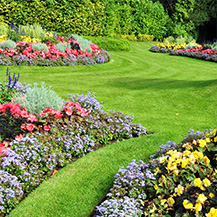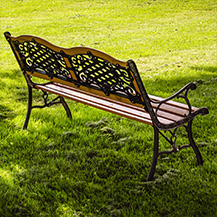Choice of mixture
Choice of mixture
What criteria to apply while choosing a mixture? First of all, we must answer the question in what conditions our lawn will grow and what purpose it will serve. A wide range of products allows for a differentiation according to: cutting frequency, intensity of use, degree of watering and insolation as well as the quality of the substrate.
The diversity of seed species has a positive effect on the resistance of the lawn and its sodding. While looking for the best mixture for your garden, you should avoid products containing pasture and annual grasses. Their rapid growth requires frequent mowing, which may prove troublesome in the long run. To avoid unwanted effects, it is best to carefully read the properties of the mixture that we want to sow.
 Sports mixtures
Sports mixtures
Sports mixtures are characterised by a high resistance to intensive exploitation of turf and rapid regeneration of leaves. Their strong and compact root system minimizes the mechanical damage to the sod. Thanks to this champion results can be expected.
Recommended mixture: English Stadium.

 Mixtures for sunlit areas, light soils and slopes
Mixtures for sunlit areas, light soils and slopes
Mixtures for sunlit areas, light soils and slopes must be resistant to harsh living conditions. A limited amount of nutrients, fast ground permeability and strong sunlight cause that unsuitably selected grasses become scarce and flaccid. These adversities are perfectly faced by mixtures based on tall and hard fescues.
Recommended mixture: Sunny

 Mixtures for ornamental lawns
Mixtures for ornamental lawns
Mixtures for ornamental lawns make a beautiful background for flowerbeds, they subtly enrich vegetable compositions raising the aesthetic qualities of space. Grasses of this type should slowly regenerate and resist a moderate strain on turf. A very high efficiency is an important feature that is achieved by the use of small-seed species.
Recommended mixture: Gold Grass

 Recreational mixtures
Recreational mixtures
Recreational mixtures based on some functional and ornamental grasses. It is a combination of pragmatism and aesthetics. These mixtures ensure creation of a sod resistant to trampling and characterized by low and slow growth as well as an attractive appearance.
Recommended mixture: Lawn

 Mixtures for shaded areas
Mixtures for shaded areas
Mixtures for shaded areas do not have easy conditions for proper development. A limited access to light inhibits physiological processes, which causes that majority of grass species fade and give way to other plants developing well in the shadow. For such areas, the most suitable are better adapted grasses.
Recommended mixture: Shadow


